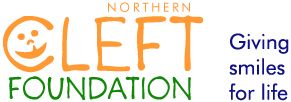What are cleft lip and cleft palate?
Cleft lip and cleft palate are openings or gaps in the upper lip, the roof of the mouth (palate) or both. Cleft lip and palate results when developing facial structures in an unborn baby fail to fuse completely.
When do they occur?
The first three months of a pregnancy are a critical time for a growing fetus. Normally, at around the fifth or sixth week, the two sides of a baby’s upper lip begin to fuse together. But in babies with cleft lip and palate, the fusion never takes place or occurs only partially, leaving an opening (cleft).
A child with a cleft lip has a visible separation in the top lip. This space can be small, or it can be a significant opening that extends from the base of the baby’s nose all the way down to the top jaw and gums.
Between the eighth and twelfth weeks of pregnancy, the roof of a baby’s mouth begins to form. The roof of the mouth is made up of two parts:
Hard palate – the firm and bony shelf holding the teeth
Soft palate – the tissue that spans the back of the mouth
When the development of one or both of these parts is incomplete, the baby has what is known as a cleft palate.
How do they occur?
Research has shown that most cases of cleft lip and cleft palate are caused by an interaction of genetic and environmental factors. Either the mother or the father can pass on genes that cause clefting as an isolated defect or as part of a syndrome. Babies born to women who smoked or drank alcohol during pregnancy are more likely to develop cleft lip and cleft palate. In many babies, a definite cause isn’t discovered.
How are they detected?
Prenatal ultrasound can sometimes determine if a cleft exists in an unborn child. If the cleft has not been detected in an ultrasound prior to the baby’s birth, a physical exam of the mouth, nose, and palate confirms the presence of cleft lip or cleft palate after a child’s birth.
What problems do they cause?
Cleft lip and palate can give rise to these problems:
Eating problems
With a separation or opening in the palate, food and liquids can pass from the mouth back through the nose.
Ear infections/hearing loss
Children with cleft palate are at increased risk of ear infections since they are more prone to fluid build-up in the middle ear. If left untreated, ear infections can cause hearing loss.
Speech problems
Children with cleft lip or cleft palate may also have trouble speaking. Their voice may take on a nasal sound and the speech may be difficult to understand.
Dental problems
Children with clefts are more prone to a larger than average number of cavities and often have missing, extra, malformed, or displaced teeth requiring dental and orthodontic treatments.
What can be done?
Having a baby born with a cleft can be upsetting, but cleft lip and cleft palate can be corrected. In most babies, a series of surgeries can restore normal function and achieve a more normal appearance with minimal scarring.
Speech Therapy
A cleft palate is a gap in the roof of the mouth. One of the most significant issues that result from this defect is difficulty with articulating speech. This is because sounds such as T, D, C, G, S and Sh involve the tongue touching the palate and if this is not possible because of the ‘gap’, an abnormal way of producing speech from the very back of the palate (typically not affected by the cleft) occurs, which can be difficult to understand. Children usually start to babble before they are twelve months old and these early babble patterns tend to transfer into later speech, so cleft palate correction is optimum around this time.
Positive reinforcement of certain sounds is helpful in encouraging future speech and speech therapy is invaluable in providing this resource as well as in determining how beneficial surgical correction will be in older children whose speech has already been affected by having a cleft palate.
